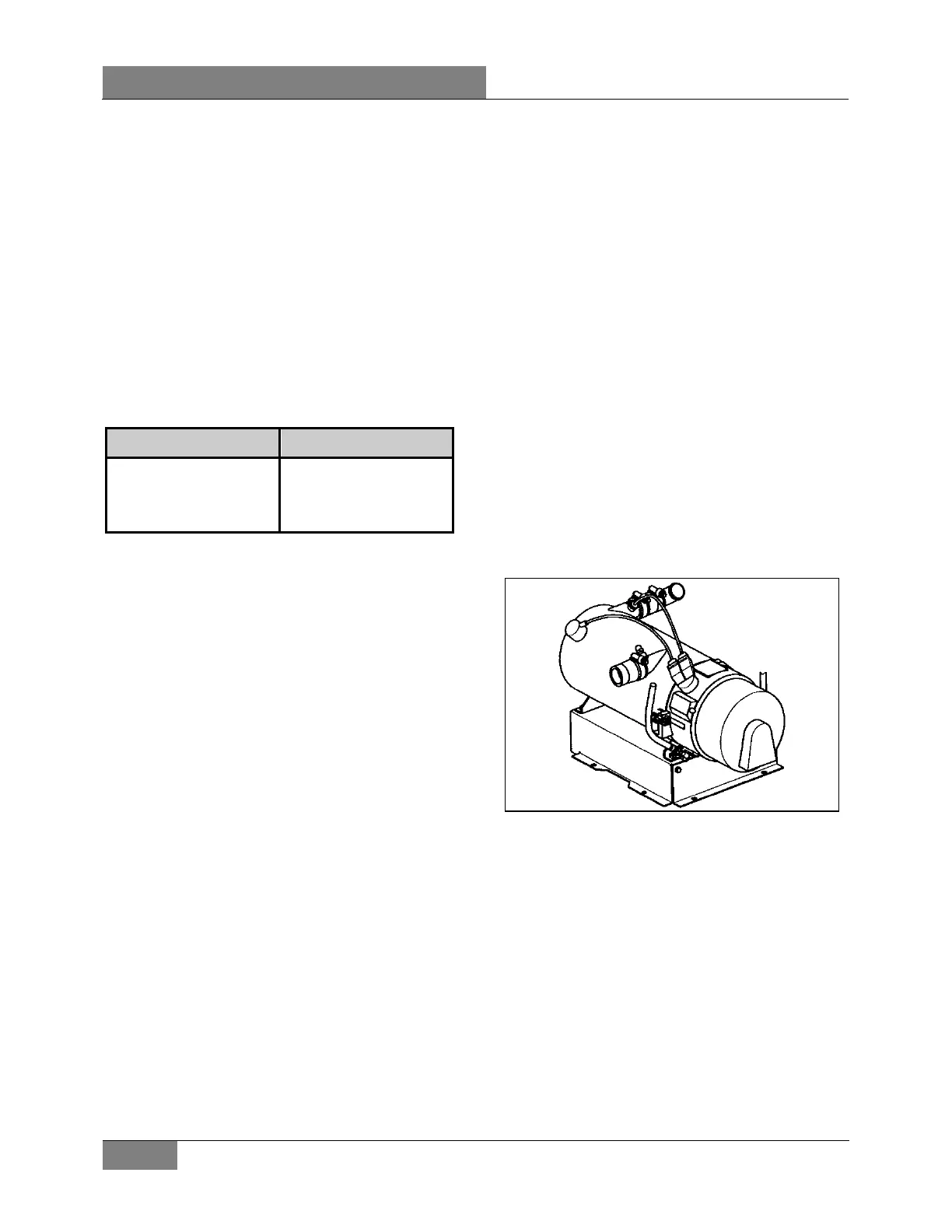SECTION 22: HEATING AND AIR CONDITIONING
66
PA1621 Maintenance Manual All Series | Section Revised November 2017
4. Shut down the vacuum pump.
5. Check to insure that vacuum holds. (If the
pressure continues to rise, it indicates a
leak or moisture in the system).
6. Charge the system with the proper amount
of refrigerant through the service port near
the check valve using recommended
charging procedures.
7. Remove the hoses.
7.7 OIL ADDITION
The chart below shows the approximate amount
of oil to be added to the system when replacing
a component.
Component replaced Typical amount of oil
Evaporator
Condenser
Filter-Dryer
50 ml (1.7 ozs)
30 ml (1.0 ozs)
10 ml (0.3 ozs)
The amount of oil recovered with the refrigerant
recovery should be added at the same time.
7.8 COMPRESSOR OIL CONTAMINATION
Unlike engine oil, no cleaning agent is added to
the compressor oil. Even if the compressor is
run for a long time, the oil never becomes turbid
as long as there is nothing wrong with the
compressor or its method of use. Inspect the
extracted oil for any of the following conditions:
Dirt in the oil.
Change to a varnish color.
Presence of foreign substance, metal
shavings, etc. in the oil. When the oil
extracted from the compressor is as
described above, replace the oil as follows:
1. Clean the interior of the system with
approved method.
2. Replace the filter-dryer.
3. Supply with new oil as specified in small
Compressor Service Manual included at
the end of this section
7.9 OIL RETURN OPERATION
There is a close affinity between oil and
refrigerant. During normal operation, part of the
oil recirculates with the refrigerant in the system.
Therefore, when checking the amount of oil in
the system or replacing any system component,
the compressor must be run in advance to
ensure return. This procedure is as follows:
If the amount of refrigerant in the system has
decreased, charge to the proper amount.
Start the engine and select fast idle.
Set the fan speed to full air/full A/C and let
run for 20 minutes.
8. PREHEATING SYSTEM (OPTION)
This Auxiliary Preheating System is used for
preheating and retaining the heat of water-
cooled engines. It can be used before starting
the engine to ease its starting and to provide
immediate inside heat upon operation of the
heating system. It can also be used with engine
running to maintain coolant heat and maintain
the set temperature inside vehicle.
The preheater operates independently from the
vehicle engine. It is connected to the cooling and
heating circuits, the fuel system and the
electrical system of the vehicle.
FIGURE 84: PREHEATER (104,000 BTU) 22224
The pilot lamp turns on when the preheater is
switched on. Combustion air flows in to flush out
the combustion chamber and the water
circulation pump is put into operation. The fuel
metering pump conveys fuel in precise doses to
the combustion chamber where fuel and
combustion air form a combustible mixture
which is ignited by the glow plug.
Once the flame sensor has signaled to the
control unit that combustion has taken place
correctly, the glow spark plug and ignition coil
are switched off.
The hot combustion gases are diverted at the
end of the flame pipe, then pass through the
indirect heating surfaces of the heat exchanger

